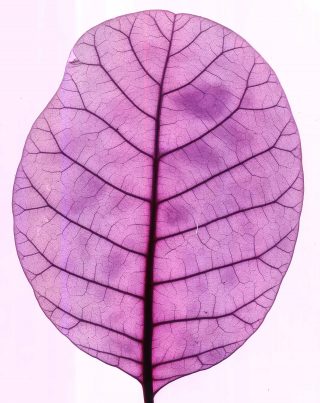
Leaf Architecture: Art, Atlas, Applications
Friday, December 13, 2019
11 a.m. – 12 p.m.
 Leaf architecture began as a collaboration between ancient and living leaves and an appreciation of the diversity of structures and patterns that leaves have evolved in response to the demands for fundamental functions. The first “leaf architect” was a paleobotanist, Constantin von Ettingshausen. Recent efforts have built on his 1862 framework for characterizing leaves, resulting in an illustrated language for patterns that had been ineffable.
Leaf architecture began as a collaboration between ancient and living leaves and an appreciation of the diversity of structures and patterns that leaves have evolved in response to the demands for fundamental functions. The first “leaf architect” was a paleobotanist, Constantin von Ettingshausen. Recent efforts have built on his 1862 framework for characterizing leaves, resulting in an illustrated language for patterns that had been ineffable.
When immersed in the beauty of leaf diversity, one must not forget that leaf architecture is an invaluable resource for plant classification and identification, helping detect relationships at different taxonomic ranks. As the primary utensil for characterizing and identifying fossils, it is essential for understanding how the plants of the past responded to climate change, and how future floras might react. Similarly, leaves constitute much of what is available to someone trying to identify tropical rain forest trees. That makes leaf architecture an increasingly important tool in tropical forest inventory, management, and conservation.
About the Speakers
Douglas C. Daly, Ph.D., is B. A. Krukoff Curator of Botany and Director of the Institute of Systematic Botany at The New York Botanical Garden. His two main research foci are the flora of the Amazon and the systematics of the Burseraceae, or frankincense and myrrh family. He has conducted over 100 botanical expeditions in the Old and New World tropics, and he has been interested in leaf architecture for over 15 years.
John D. Mitchell is Adjunct Scientist at the Institute of Systematic Botany of The New York Botanical Garden. He has published numerous scientific papers, primarily on the taxonomy of the Anacardiaceae, or cashew, mango, and poison ivy family. He has collaborated extensively with Dr. Daly on taxonomic treatments of the Anacardiaceae and the application of leaf architecture to the identification and classification of Anacardiaceae and Burseraceae.
Support for the Humanities Institute provided by The Andrew W. Mellon Foundation
 Location In the LuEsther T. Mertz Library
Location In the LuEsther T. Mertz Library